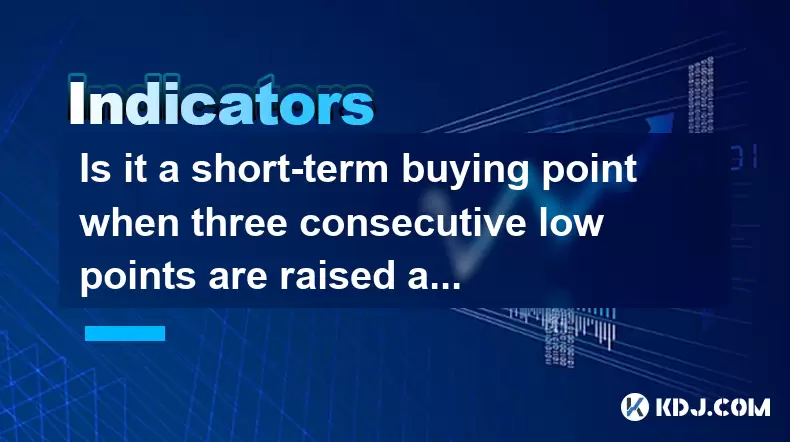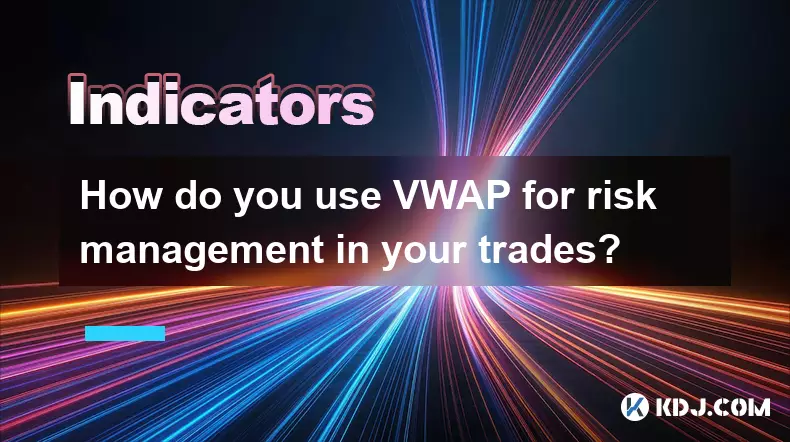-
 bitcoin
bitcoin $114684.631706 USD
-0.87% -
 ethereum
ethereum $4228.677447 USD
1.58% -
 bnb
bnb $1294.880693 USD
-1.16% -
 tether
tether $1.000819 USD
-0.02% -
 xrp
xrp $2.605138 USD
2.79% -
 solana
solana $209.908690 USD
5.89% -
 usd-coin
usd-coin $0.999903 USD
-0.03% -
 dogecoin
dogecoin $0.213423 USD
2.93% -
 tron
tron $0.322721 USD
-0.10% -
 cardano
cardano $0.727247 USD
3.66% -
 hyperliquid
hyperliquid $42.339456 USD
6.05% -
 chainlink
chainlink $19.910811 USD
5.16% -
 ethena-usde
ethena-usde $1.000557 USD
0.00% -
 stellar
stellar $0.349734 USD
2.69% -
 bitcoin-cash
bitcoin-cash $543.848687 USD
-0.21%
Is it a short-term buying point when three consecutive low points are raised at the 30-minute level?
A potential bullish reversal may occur when three consecutive higher lows form on a 30-minute chart, signaling diminishing selling pressure and possible buying interest.
Jun 17, 2025 at 08:14 pm

Understanding the Three Consecutive Low Points Pattern
In technical analysis, identifying patterns in price movements is essential for making informed trading decisions. One such pattern that traders often observe is when three consecutive low points are raised within a specific timeframe — in this case, the 30-minute chart. This pattern suggests a potential reversal from a downtrend to an uptrend. The idea behind this signal is that each subsequent low is higher than the previous one, indicating that selling pressure is diminishing and buyers may be stepping in.
This formation typically appears after a period of decline, where bears have been in control. When the price fails to make new lows and instead forms higher lows, it signals a shift in momentum. Traders interpret this as a possible entry point for a short-term long position, especially if other indicators confirm the change in trend.
Three consecutive higher lows on a 30-minute chart can serve as a potential buying opportunity.
Why the 30-Minute Timeframe Matters
The 30-minute chart is widely used by intraday traders who seek to capture small but frequent moves in cryptocurrency prices. It offers more detail than higher timeframes like the 4-hour or daily charts, while still filtering out some of the noise seen in lower intervals like the 5-minute or 15-minute charts.
When analyzing the three consecutive low points pattern, using the 30-minute interval helps in identifying short-term reversals with relatively better accuracy. Because cryptocurrencies are known for their high volatility, shorter timeframes allow traders to react quickly to changing market conditions without being exposed to overnight risks or prolonged holding periods.
The 30-minute chart strikes a balance between responsiveness and reliability in spotting short-term trends.
How to Confirm the Signal Using Other Indicators
Relying solely on price action can lead to false signals, especially in the highly volatile crypto market. To strengthen the validity of the three consecutive higher lows pattern, traders often use additional tools such as moving averages, RSI (Relative Strength Index), and volume analysis.
- Moving Averages: If the price crosses above key moving averages (e.g., 20-period or 50-period MA), it supports the idea of a bullish reversal.
- RSI: An RSI rising above 50 confirms strengthening momentum, suggesting that buyers are gaining control.
- Volume: An increase in volume during the formation of higher lows indicates stronger participation from buyers, reinforcing the reversal signal.
Combining multiple indicators increases the probability of a successful trade setup based on higher lows.
Executing the Trade: Entry, Stop-Loss, and Take-Profit Levels
Once the pattern is confirmed, executing the trade requires precision in setting entry points, stop-loss levels, and take-profit targets.
To enter the trade:
- Wait for the third higher low to close.
- Enter a buy order slightly above the high of the candlestick forming the third low.
For risk management:
- Place a stop-loss just below the lowest low of the three lows.
- This ensures limited downside if the pattern fails.
Regarding profit-taking:
- Target a risk-reward ratio of at least 1:2.
- Alternatively, trail the stop-loss using a moving average or support level.
Proper risk management is crucial when trading off a three-low pattern to protect capital in unpredictable crypto markets.
Common Pitfalls and How to Avoid Them
Despite its usefulness, the three consecutive higher lows pattern isn't foolproof. Traders must be cautious of several common pitfalls:
- False Breakouts: Sometimes, what appears to be a reversal turns into a trap set by larger players. Always wait for confirmation before entering a trade.
- Market Noise: Shorter timeframes like the 30-minute chart can produce erratic price movements. Filtering with volume or indicators reduces noise.
- Lack of Context: The same pattern can appear in different market phases. A bullish pattern during a strong downtrend may not hold, so always assess the broader trend.
Avoid impulsive trading by waiting for confirmation and understanding the broader market structure.
Frequently Asked Questions
Q: Can this pattern work on other timeframes besides 30 minutes?Yes, the three consecutive higher lows pattern can be applied to other timeframes like the 1-hour or 15-minute chart. However, the reliability varies depending on the timeframe. Lower timeframes tend to generate more false signals, while higher timeframes provide stronger context but fewer opportunities.
Q: Should I always wait for the third low to fully form before taking a trade?It's generally advisable to wait for the third low to complete and confirm the pattern before entering a trade. Entering early may expose you to unnecessary risk if the pattern doesn’t materialize as expected.
Q: What if the price breaks below the first low after forming two higher lows?If the price breaks below the first low, it invalidates the pattern. In such cases, it’s best to avoid the trade or reassess the situation. Persistence of higher lows is critical for the strategy to work.
Q: How do I differentiate between a valid pattern and random price fluctuations?Use confluence with other indicators such as RSI, moving averages, and volume. A valid pattern will often show signs of decreasing bearish momentum and increasing buyer interest, which can be verified through these tools.
Disclaimer:info@kdj.com
The information provided is not trading advice. kdj.com does not assume any responsibility for any investments made based on the information provided in this article. Cryptocurrencies are highly volatile and it is highly recommended that you invest with caution after thorough research!
If you believe that the content used on this website infringes your copyright, please contact us immediately (info@kdj.com) and we will delete it promptly.
- XRP Price Prediction: Weekend Rollercoaster or Rally?
- 2025-10-12 08:45:16
- Bittensor (TAO): Super Bullish Signals Point to Potential 2x Rally
- 2025-10-11 10:25:12
- Silver Price Correction: Navigating the Dip & Identifying Key SEO Keywords
- 2025-10-11 10:25:12
- Decoding Crypto Trends: Bittensor's Bull Run, Cardano's Dip, and LivLive's Presale Buzz in 'Uptober 2025'
- 2025-10-12 08:45:16
- MoonBull: The Crypto Meme Coin Promising 1000x Gains?
- 2025-10-11 10:30:01
- Crypto Payroll Revolution: Stablecoins, Altcoins, and the Future of Salary Payments
- 2025-10-11 10:30:01
Related knowledge

What's the main difference between VWAP and TWAP?
Oct 12,2025 at 11:54am
Understanding VWAP and Its Role in Crypto Trading1. Volume Weighted Average Price (VWAP) is a trading benchmark that calculates the average price of a...

How do you identify exhaustion moves using VWAP and its bands?
Oct 12,2025 at 08:00am
Understanding the Role of Decentralized Exchanges in Crypto Trading1. Decentralized exchanges (DEXs) operate without a central authority, allowing use...

How do you use VWAP to scale in and out of positions?
Oct 14,2025 at 02:19am
Understanding VWAP as a Dynamic Benchmark1. The Volume Weighted Average Price (VWAP) is not just an indicator—it functions as a dynamic benchmark that...

What are the main advantages of using VWAP over EMA?
Oct 11,2025 at 02:18am
Main Advantages of Using VWAP Over EMA1. Volume-Weighted Average Price (VWAP) incorporates trading volume into its calculation, offering a more accura...

How do you use VWAP on different chart types like Heikin Ashi?
Oct 11,2025 at 05:01pm
Understanding VWAP in the Context of Heikin Ashi Charts1. The Volume Weighted Average Price (VWAP) is a powerful analytical tool commonly used by trad...

How do you use VWAP for risk management in your trades?
Oct 11,2025 at 02:54am
Understanding VWAP as a Dynamic Benchmark1. The Volume Weighted Average Price (VWAP) serves as a crucial reference point in intraday trading by reflec...

What's the main difference between VWAP and TWAP?
Oct 12,2025 at 11:54am
Understanding VWAP and Its Role in Crypto Trading1. Volume Weighted Average Price (VWAP) is a trading benchmark that calculates the average price of a...

How do you identify exhaustion moves using VWAP and its bands?
Oct 12,2025 at 08:00am
Understanding the Role of Decentralized Exchanges in Crypto Trading1. Decentralized exchanges (DEXs) operate without a central authority, allowing use...

How do you use VWAP to scale in and out of positions?
Oct 14,2025 at 02:19am
Understanding VWAP as a Dynamic Benchmark1. The Volume Weighted Average Price (VWAP) is not just an indicator—it functions as a dynamic benchmark that...

What are the main advantages of using VWAP over EMA?
Oct 11,2025 at 02:18am
Main Advantages of Using VWAP Over EMA1. Volume-Weighted Average Price (VWAP) incorporates trading volume into its calculation, offering a more accura...

How do you use VWAP on different chart types like Heikin Ashi?
Oct 11,2025 at 05:01pm
Understanding VWAP in the Context of Heikin Ashi Charts1. The Volume Weighted Average Price (VWAP) is a powerful analytical tool commonly used by trad...

How do you use VWAP for risk management in your trades?
Oct 11,2025 at 02:54am
Understanding VWAP as a Dynamic Benchmark1. The Volume Weighted Average Price (VWAP) serves as a crucial reference point in intraday trading by reflec...
See all articles










































































